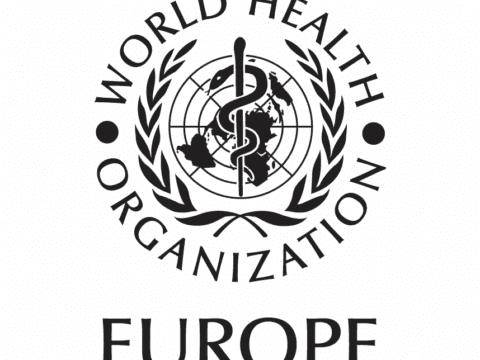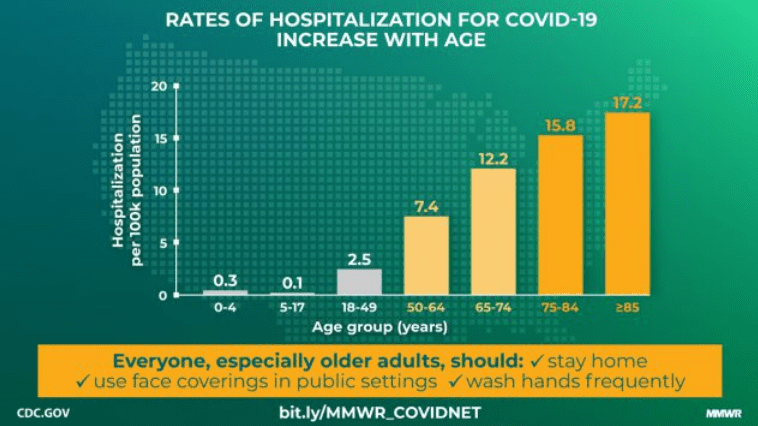Please keep China in your prayers. The unprecedented efforts to contain the Corona virus may bring rapid success, I hope, but also bring great hardship to millions for a time. The challenges for those living in fully locked-down cities like Wuhan, Huangguang, and Ezhou may be enormous. But even in areas where the virus is not raging, like the beautiful, modern metropolises of Shanghai and Hangzhou, life can be difficult. People coming home from travel, like two American friends of mine who just returned to Shanghai from Australia, or a European friend who just got back to Hangzhou from a visit in Shanghai, are finding that strict regulations make them prisoners in their own apartment as the government requires quarantine for travelers. That’s if you are lucky enough to get home at all — my friend in Hangzhou said that she got home just one day before a ban on travelers entering the city went into effect. I don’t know how accurate that is, so I’m just reporting what she understands.
In Shanghai, people returning on Sunday and hoping to start work on Monday are in for disappointment and frustration. It may be one or two weeks before they can go back to work, depending on local rules. Once again, even while living temporarily overseas, the wisdom of having food storage and basic supplies in reserve is manifest, though quarantined residents may be able to go to the local market for essentials or have them delivered.
One man in Shanghai desperately needed to get his new passport that was sent by DHL to Shanghai, but had not been delivered to him for a number of days because DHL was largely shut down due to virus fears. It was only by going to DHL offices and “crying” for hours in front of the building that he finally got the attention of workers there who dug around in a pile of undelivered packages and found his passport, giving him time to get to the airport with just two hours to spare before his flight out of the country. Without that, he would have been in violation of Chinese law with an expired visa. You don’t want to violate visa rules in any foreign country.
Such tales, though, may be nothing compared to the sorrows of those who are trapped in places they don’t belong, without resources and friends, unable to leave. Or even local Wuhan residents struggling with the challenges of living life under a lockdown with so much uncertainty, in spite of valiant efforts now to provide support and services. An American trapped in Wuhan did manage to get a seat on a plane out organized by the US government, but the problem was getting to the airport, some 30 miles away from his home. A few weeks ago that would have been easy: just take a taxi. But taxis in Wuhan have been shut down except for a handful dedicated to taking patients to the hospitals, but this requires a complex process of getting approval from the local government committees for each region of town and there’s no chance of getting a ride to the airport. With no feasible way to get to the airport, the man missed the flight and his seat was given to someone else. Fortunately, he had a second passport with Germany, and was able to get on the evacuation flight for Germany, a nation that kindly sent a bus to give German citizens rides to the airport. (Congratulation to those of you who recognize the many virtues of having a second passport. When things go crazy in your home country, it’s nice to have another option.)
In spite of China now going all out to contain the virus, there seems to be widespread anger toward China and the Chinese people. There are accusations that China did not act quickly enough or still is not doing enough. But Chinese people are also experiencing blame and anger. Hotels, shops, and restaurants in some areas are turning away Chinese people. Rudeness and xenophobic hysteria abound in some hearts. As I left Asia a few days ago, after a two-week virus-free exile in Vietnam before I began a business trip to the US for an R&D project in Minneapolis (I just love the University of Minnesota, by the way!), I read a front-page article in the New York Times on my flight from Hanoi to Seoul and was pained to see further evidence of the worldwide anger toward China. Motoko Rich’s Feb. 1-2, 2020 article, “Global Xenophobia Follows Virus.” See also MarketWatch’s “‘No Chinese allowed’: Racism and fear are now spreading along with the coronavirus” from Feb. 3. This is a tough time to be Chinese. The video below from a Chinese man in Florence, Italy reminds us of the humanity of those facing prejudice because a virus originated in their country.
Some say there’s a deja vu sense to this virus, which is causing so much hysteria around the globe. But there’s reason for the hysteria: the virus has left China, and now has killed people elsewhere in the world, including (as of Feb. 4) Hong Kong (1 death) and Philippines (1 death), etc., etc., etc., for a total of, well, two deaths so far outside of China. But in China, nearly 500 people have died, so the death toll is on its way to reaching that of the worldwide 2009 influenza pandemic with the H1N1 virus. Well, on its way to some degree, I suppose. The H1N1 virus that started in the Americas spread worldwide and ended up killing over 200,000 people (maybe as many as 500,000). Not 200, not 500, but over 200,000.
Do you recall the the draconian measures taken by the US government to contain that virus in 2009 and 2010? And do you remember the worldwide hostility toward North Americans for that North American virus? The shunning of all things American, the refusal to allow Americans to stay in hotels or enter restaurants, the locking down of New York, Miami, and LA? The martial law, the quarantines, the months of delayed school and the crushing of the US economy? The inability to fly, travel, or even leave your apartment? My memory must be fading, because I don’t remember any of that. I remember encouragement to get flu shots then and warnings about the virus, but not the massive, painful disruption of travel, work, school, and normal life, nor escalation in anti-American sentiment. It’s our bombs that stir that up, not our virus management policies.
China is responding to the crisis by locking down many cities, stranding over 50 million people, with martial-law measures in many other cities with tough regulations forcing many to be quarantined and hindering travel, work, and normal life. Perhaps too extreme, one can argue. There is also the cessation of much public transportation or blockades on roads in and out of many cities, the shutting down of thousands of tourist attractions, delayed operations for millions of employees, delayed school for millions, and so forth. Such extreme measures to contain this virus, and yet there is still international hysteria and blame. Outside of China, two have died, a few hundred are affected. It may get much worse, but right now, it’s noting compared to seasonal bouts of influenza and nothing close to our own H1N1 pandemic that generated hardly any hysteria and resulted in a government response that was not exactly aggressive (I’m not saying it should have been — I really don’t know what should have been done). My point is, do we really need to shun China and be angry at the Chinese people for this one?
Yet the virus has unusually dangerous characteristics and may merit the extreme measures to control it. I’m not sure. But I hope we’ll keep this in perspective relative to the thousands of deaths the US experiences every flu season from related though perhaps less severe viruses. And I pray that we’ll remember China and recognize the great burdens the Chinese people are bearing, and not add to their burdens unnecessarily. Keep China and the Chinese people in your prayers, and thanks to those who are taking steps to help rather than to blame.
Update, Feb. 5 & 6, 2020: Mortality Rates
Regarding mortality rates, the official data from China suggests the mortality rate may be around 2%, though an early estimate from a small sample suggested it could be 11%. Hopefully mortality will decline as experience in gained and as treatments begin earlier for those at the most risk. However, current morality rates are based on total death relative to total cases, but many of the total cases are very recent, while the deaths are coming from infections that began perhaps a week or two ago when the number of cases were much lower, so the reported fatalities now during a rapidly escalating pandemic are surely severely underestimated, even if all the numbers being reported are accurate.
Here is some information on the mortality rate of the Wuhan Coronavirus relative to some other related viral infections, provided by ScienceAlert.com:
The 2002/03 SARS outbreak (Severe Acute Respiratory Syndrome) started in Guangdong Province and killed 774 people out of a total 8,096 infected. The 2012 MERS outbreak (Middle East respiratory syndrome) killed 858 people out of the 2,494 infected.
The respective mortality rates for SARS and MERS patients was 9.5 and 34.5 percent, far higher that for the new coronavirus, which French health minister Agnes Buzyn put at “less than five percent”.
That rate is likely to decline, experts say, as the ratio of deaths to reported cases continues to widen.
The coronavirus “is less deadly than SARS or MERS, but it is more contagious,” Buzyn said in a press conference Tuesday.
The seasonal flu, by comparison, kills 290,000 to 650,000 people per year, according to the World Health Organization (WHO). In the United States, the mortality rate among people infected with influenza is about 0.13 percent, the Centers for Disease Control has calculated.












Yes but….
The mortality rate for swine flu was about 0.01%, which is 10-100 times higher than other flu strains, but the Wuhan virus has a mortality rate of about 1%. So if it goes pandemic like swine flu then 10-30 million people die.
"You don't want to violate visa rules in any foreign country."
Especially in countries with exceptionally cruel regimes.
Quantumleap, the mortality rate for the 2009 influenza pandemic can be estimated from the stats of 200,000+ deaths of 16 million infected, or well over 1%. Wikipedia at https://en.wikipedia.org/wiki/Swine_influenza gives the swine flu a mortality rate of 1% to 4%. Mortality rate for the Wuhan Coronavirus has been estimated to be as high as 11% from an early study of a few dozen people, but the aggregate data, if they can be trusted, suggests it is more like 2%. It may be higher, but is not likely to be anywhere close to what we saw with MERS (about 34%), and may be less than SARS, which was around 9.5%. See https://www.sciencealert.com/here-s-what-scientists-do-and-don-t-know-about-wuhan-coronavirus-so-far. I'll add that info to the post above. Seasonal flu in the US has a morality rate around 0.1%, which may be what you were thinking of. But if you have a better source of info, I'd welcome it. I'm not an expert in this area. Thanks for the input!
It's been a few years since I've talked to my friends in epidemiology but based on what I remember there are a few different ways to measure the mortality rate. The "official" mortality rate that gets reported by the CDC and other government bodies throughout the world is total deaths divided by total confirmed cases. To be a confirmed case a sample has to be taken and verified by a lab (there is some flexibility in this in epidemics they reduced the standard to "someone who has seen a doctor and exhibits symptoms"). Someone who has the symptoms but never goes to a doctor doesn't get counted.
This means that the official infection rate always undercounts the number of people infected. Epidemiologists are aware of this so for planning purposes they use models to estimate how many people actually get infected vs. how many see a doctor.
They also have to figure out how many people are infectious but don't show symptoms and technically don't count as "infected".
The Wikipedia article uses the official mortality rate (total deaths divided by total confirmed cases). But in the 2009 epidemic they advised people who had the flu to NOT seek medical attention if their symptoms weren't that bad. So only people who had a bad case came in and got counted as infected.
Using surveys and estimates the total number of people infected by the swine flu was more than 500 million. Depending on what assumptions you use. Estimates range up to 1 billion (sorry I don't have a source to point you to because I got this from a discussion with some friends who are epidemiologists). That puts the true mortality rate in the .01-.1% range. This means the underreporting rate for swine flu was 10-100 times the official count.
The number of people infected by the Wuhan virus is actually better known than many other viral infections because they are actively looking for those infected. So the underreporting rate is a lot lower.
The underreporting rate was a big deal a few weeks ago because back when the first international cases were found in Vietnam and Singapore epidemiologists looked at the number of reported cases, which at the time was about 150, and called BS because if the actual infection rate was that low we should not see that many international cases. This meant either the Chinese government was intentionally underreporting or they didn't actually know how many cases there were which meant they were doing nothing to stop it.
But since they stepped up, the number of infections, and the number of deaths, have followed near perfect exponential curves of growth. Which means they are doing a good job at finding new cases, but not containing it. Because of this the actual mortality rate and the official mortality rate should be very similar with a low underreporting rate.
And this is what makes the Wuhan virus scary. The *actual* mortality rate is around 1% and not just the official mortality rate.
But compare that with the 1918 influenza epidemic with an actual mortality rate around 20%.
The best data on the Wuhan virus comes from Johns Hopkins.
https://systems.jhu.edu/research/public-health/ncov-model-2/
Their model estimates 58,000 infected by the end of January. So an underreporting rate of 1 to 1 (for every confirmed case there is one untracked case).
This puts the actual mortality rate at 1%, with an official mortality rate of 2%.
Great information, Quantumleap! Very much appreciate the analysis and the perspectives gleaned from epidemiologists. So we may have a pretty dangerous pandemic on our hands after all. The good news is that China is reporting a slowing in the number of new cases. Hopefully we reach the peak very soon and begin a descent toward containment.
'The Chinese Communist Party is heading even faster and further in the wrong direction – more internal repression, more predatory economic practices, more heavy-handedness, and most concerning for me, a more aggressive military posture,'